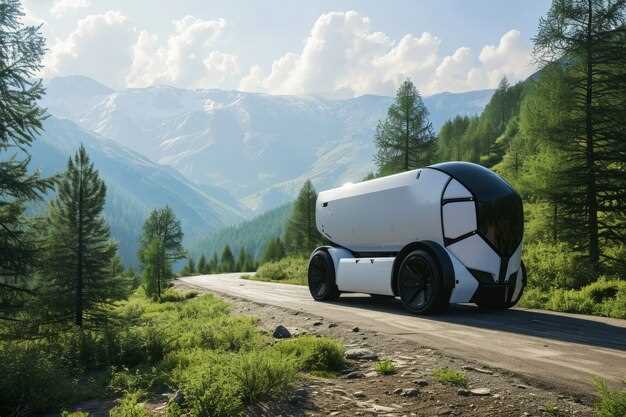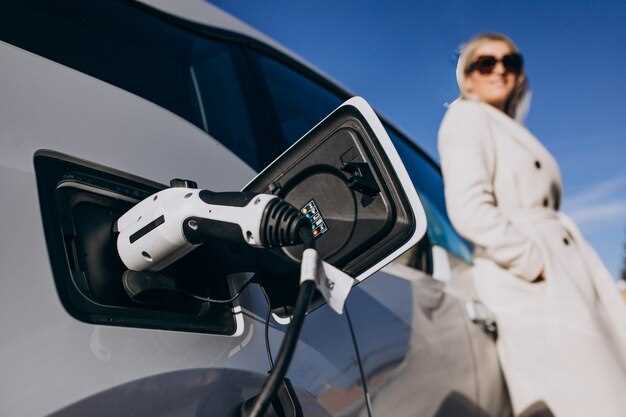
The electric truck market is on the brink of a revolutionary transformation in 2024, with manufacturers unveiling an array of cutting-edge innovations designed to enhance performance, efficiency, and sustainability. As industries increasingly shift towards electrification, the latest electric trucks are not just vehicles; they represent a significant leap forward in technology and design, addressing the growing demand for eco-friendly transportation solutions.
Among the standout features of 2024 electric trucks is the introduction of advanced battery technology, which promises longer ranges and faster charging times. With developments in solid-state batteries, manufacturers are targeting energy densities that could double the range compared to their predecessors. This innovation allows fleets to operate more effectively without the persistent worry of finding charging stations, thereby increasing productivity.
In addition to improved battery systems, autonomous driving capabilities are becoming a pivotal aspect of electric trucks in 2024. Enhanced artificial intelligence and machine learning applications enable these vehicles to navigate complex environments safely and efficiently. This not only enhances driving comfort but also optimizes logistics, resulting in reduced operational costs for businesses.
Furthermore, the integration of smart connectivity features offers drivers real-time data regarding vehicle performance, maintenance needs, and route optimization. This level of connectivity ensures that operators can monitor their fleet’s health and expenses, leading to more informed decision-making. As the market for electric trucks evolves, the innovations of 2024 signal a promising future for sustainable transportation.
Advanced Battery Technologies for Longer Range
As the demand for electric trucks grows, the need for advanced battery technologies that enhance range and efficiency is critical. Innovations in battery design and materials are paving the way for longer ranges, reduced charging times, and improved overall performance.
One of the most significant developments is in lithium-silicon batteries, which surpass traditional lithium-ion technology. By incorporating silicon into the anode, these batteries can store more energy, resulting in a substantial increase in range. This technology also addresses common issues such as dendrite formation, which often shortens battery life.
Another promising advancement is solid-state batteries, which replace the liquid electrolyte with a solid material. This change not only enhances energy density but also improves safety by reducing flammability risks. Solid-state batteries can lead to lighter battery packs, allowing for better weight distribution and improved efficiency in electric trucks.
Furthermore, ultrafast charging technologies are emerging alongside these advanced batteries. With the ability to charge to 80% in just 15 minutes, electric trucks can become more practical for long-haul operations. These systems utilize high-capacity charging stations and intelligent thermal management to maintain battery health while delivering quick power boosts.
Lastly, advancements in battery management systems (BMS) are crucial for optimizing performance. Modern BMS technologies enhance the monitoring of battery health, temperature, and charge levels, ensuring the longevity and reliability of battery packs. This data-driven approach allows for better resource allocation and enhances overall vehicle performance.
As these technologies continue to evolve, the electric truck industry is poised for significant enhancements in range, making electric options more viable for commercial use. The combination of higher energy densities, faster charging capabilities, and smart management systems will drive the future of electric transportation.
Integration of Smart Connectivity and Autonomous Driving

The integration of smart connectivity and autonomous driving technology in 2024 electric trucks marks a significant advancement in the automotive industry. These innovations enhance operational efficiency, safety, and user experience, making electric trucks more competitive in the transport sector.
Smart connectivity allows electric trucks to communicate with other vehicles, infrastructure, and cloud-based services. This two-way communication enables features such as real-time traffic updates, optimal route planning, and predictive maintenance alerts. By analyzing data from multiple sources, these systems can adapt to changing conditions, enhancing logistics and reducing delivery times.
Moreover, autonomous driving capabilities equip electric trucks with the ability to navigate complex environments with minimal human intervention. Advanced sensors, artificial intelligence, and machine learning algorithms work together to interpret surroundings, helping vehicles make split-second decisions. This not only increases safety by reducing human errors but also lowers operational costs by optimizing fuel consumption and minimizing wear and tear on vehicles.
The convergence of smart connectivity and autonomous systems allows for fleet management to become more streamlined. Fleet operators can monitor vehicle health, manage driver schedules, and track cargo in real time. This level of oversight enables better resource allocation and inventory management, ultimately driving down costs.
As regulations around autonomous technologies evolve, manufacturers are increasingly focusing on compliance and safety standards. The integration of these technologies not only promises to transform the capabilities of electric trucks but also aims to meet rigorous safety criteria, fostering public trust in autonomous solutions.
In conclusion, the blend of smart connectivity and autonomous driving in electric trucks is set to define the future of transportation. By maximizing efficiency and enhancing safety, these innovations will likely play a crucial role in the widespread adoption of electric trucks in various industries.
Impact of Lightweight Materials on Performance and Efficiency

The integration of lightweight materials in electric trucks is revolutionizing the automotive industry by significantly enhancing performance and efficiency. Weight reduction plays a crucial role in improving the overall range and capability of electric vehicles (EVs).
One of the primary benefits of lightweight materials, such as aluminum, carbon fiber, and advanced composites, is their ability to decrease the overall weight of the truck. This reduction directly leads to lower energy consumption, as electric motors require less energy to propel a lighter vehicle. Consequently, manufacturers can achieve extended driving ranges on a single charge, making electric trucks more viable for long-haul applications.
Moreover, enhanced aerodynamics is another advantage of using lightweight materials. By reducing drag and improving the truck’s overall shape, manufacturers can further optimize the vehicle’s efficiency. Streamlined designs, combined with lightweight construction, not only improve fuel economy in hybrid models but also enhance the driving dynamics of fully electric trucks.
Additionally, the use of lightweight materials contributes to improved payload capacity. With a lighter vehicle structure, electric trucks can carry more cargo without exceeding weight limits, resulting in better operational efficiency for businesses. This capability is crucial in industries where load efficiency determines profitability.
Furthermore, durability and strength are not sacrificed when lightweight materials are employed. Advanced composites and high-grade aluminum provide robust structures that withstand the rigors of daily use while minimizing weight. This durability ensures a longer lifespan for the truck, reducing maintenance costs and downtime.
In conclusion, the impact of lightweight materials on electric trucks cannot be underestimated. They enhance performance, boost efficiency, and provide operational advantages that are essential in today’s competitive market. As innovations continue, the deployment of these materials will play a pivotal role in shaping the future of electric transportation.




